I'm using ADLS Gen2 using rest api Path-Update i'm trying to update data into already created created blank file into ADLS. but whenever i'm trying to use the API i'm getting below response from API. {StatusCode: 202, ReasonPhrase: 'Accepted'} but still the file will be empty.
string requestUri = "https://XXXXXXX.dfs.core.windows.net/XXXXX/abc.txt?action=append&position=0";// &retainUncommittedData=false&close=true";
dynamic method = new HttpMethod("PATCH");
dynamic request = new HttpRequestMessage(method, requestUri)
{
Content = new StringContent("\"requestBody\":\"test\"")
};`enter code here`
// Add some defined headers
request.Headers.Authorization = new AuthenticationHeaderValue("Bearer", authenticationToken);
request.Headers.Accept.Add(new MediaTypeWithQualityHeaderValue("application/octet-stream"));
// Add some other headers or custom headers
request.Headers.TryAddWithoutValidation("Content-Length", "0");
dynamic httpClient = new HttpClient();
dynamic result = httpClient.SendAsync(request).Result;
i expect the data should be updated in file but now i'm getting 202 Accepted as a response code but file is not updated with data
also i tried append with flush operation below is the code i'm getting 405 error
string requestUri = "https://XXXXXX.dfs.core.windows.net/XXXXX/abc.txt?action=append&position=0";// &retainUncommittedData=false&close=true";
var method = new HttpMethod("PATCH");
var request = new HttpRequestMessage(method, requestUri)
{
Content = new StringContent("\"requestBody\":\"test\"")
};
// Add some defined headers
request.Headers.Authorization = new AuthenticationHeaderValue("Bearer", authenticationToken);
request.Headers.Accept.Add(new MediaTypeWithQualityHeaderValue("text/plain"));
// Add some other headers or custom headers
// request.Headers.TryAddWithoutValidation("Content-Length", "0");
var httpClient = new HttpClient();
var result = httpClient.SendAsync(request).Result;
string requestUri1 = "https://XXXXX.dfs.core.windows.net/XXXXXX/abc.txt?action=flush&position=0";//&retainUncommittedData=false&close=true";
using (HttpClient httpClient1 = new HttpClient())
{
httpClient.DefaultRequestHeaders.Authorization = new AuthenticationHeaderValue("Bearer", authenticationToken);
HttpResponseMessage response = (httpClient.PutAsync(requestUri1, null)).Result;
}
